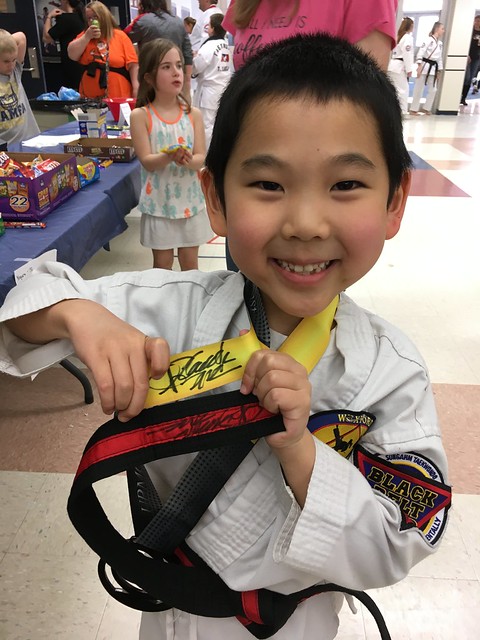First, we got 1" thick tatami foam puzzle type mats from IncStores that we laid on the floor. The thickness was for normal martial arts (i.e. some impact, but we are not wrestlers or judoki.) This was used to cover the larger portion of the basement floor in a checkerboard pattern (gray and black squares) These mats were not difficult to cut with box cutters, so we cut them to fit the basement and the way the walls were laid out. This was a good way of covering a concrete floor. The way the basement is laid out, it is big enough for me to cover half a Songham (ATA style taekwondo) square for forms. So as long as I start in an appropriate place, I can do a form with full extensions. (which I could not do at the old house). So this floor gets used for TKD practice, forms, and drills, along with bodyweight exercises.
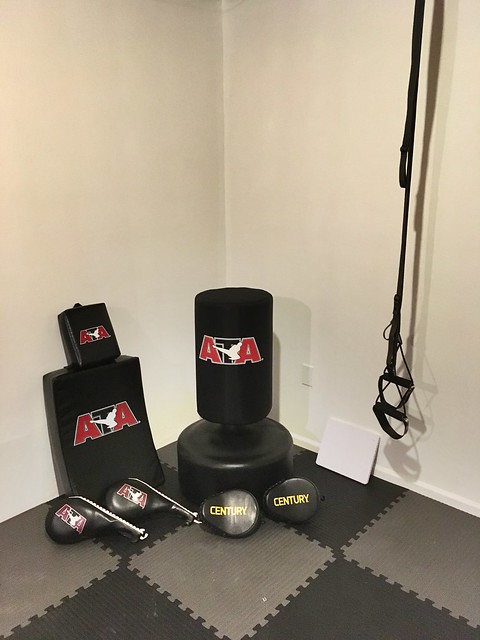 |
| Taekwondo training gear |
For bodyweight exercises, we are used to this from taekwondo, but our real use is based on a fitness cards based on Stack 52 Strength decks. (review) So (now) DS 7 and I will draw 7-10 cards (he uses both beginner and intermediate cards) and we will do them. DD 4 also joins in and does her analogue of the exercises as well.
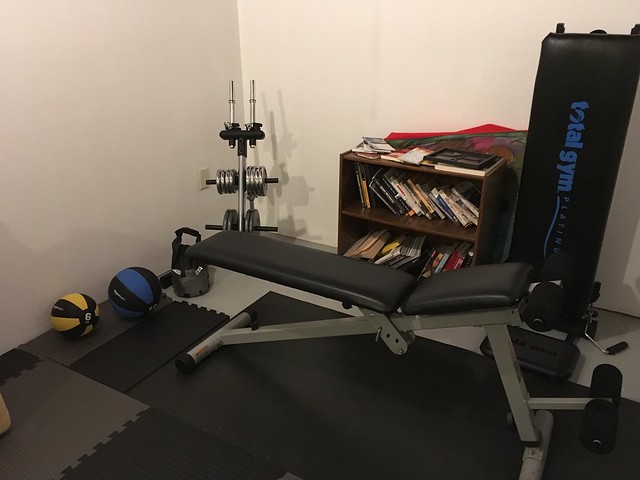 |
| Weights and Total Gym |
After moving to the new house, I added a pair of medicine balls (6 lb and 10 lb) to the mix. These were good complements to the bodyweight exercise, as they could be used with pretty much any bodyweight exercise to add more of a challenge. In fall, I decided that I would use the winter to add strength to my conditioning and I purchased 4x10lb weights and additional handles, which more than doubled the weight I had and allowed for switching between heavy, medium, and low weight exercises much easier. More recently, I got the weight tree for the plates (which used to live on the mat underneath the weight bench) and a lot more weight plates (taking advantage of coupons and a sale from Dick's sporting goods), improving both the maximum weight and the range of different exercises I could be set up for in a workout. Another use of the weight plates is for conditioning. I have a military grade Camelbak HAWK backpack that I will load with 20 lbs of plates for rucking when going on walks with my family (so what is good exercise for the kids is also good exercise for me). One big thing, weight training has gotten much more interesting and enjoyable once I got enough weights for it to be a challenge. Working with the 40lb dumbbell set was essentially a messed up conditioning workout. I could not go fast enough for a proper conditioning workout, but there was not enough resistance to actually get stronger.
For exercise equipment, I had a Total Gym from many years ago. It was an incline based equipment that I have had from my apartment days. It was always lightly used, generally it got the most use during winter when I ran outside less than before. And after kids it got a little problematic because the track that the pad rolls on is an obvious pinch hazard. And I probably had it on its steepest (hardest) setting from basically the time I bought it, so it really only was good for making my muscles move, not really for building strength or endurance. To give me conditioning equipment to go along with the strength equipment, I got a suspension trainer (no longer available when the dominant company, which will remain nameless, used to court system to push them out of the market). Since we have a semi-finished basement, the beams in the ceiling were exposed and I used one of these to mount the suspension trainer. Similarly to the bodyweight exercises, I have a set of suspension exercise cards from Stack 52 to provide variety in my routine. This takes over from the Total Gym as it is easier to set up the exercise to be more difficult even as I am getting cardio in from lots of reps (at the end of the day, these are slightly harder versions of bodyweight exercises, but not as hard as using my dumbbells, so I use this for cardio as I am doing a large number of reps. With the Stack 52 cards I have a range of exercises for upper body, core, and lower body. And I can generate a fairly long circuit for conditioning.
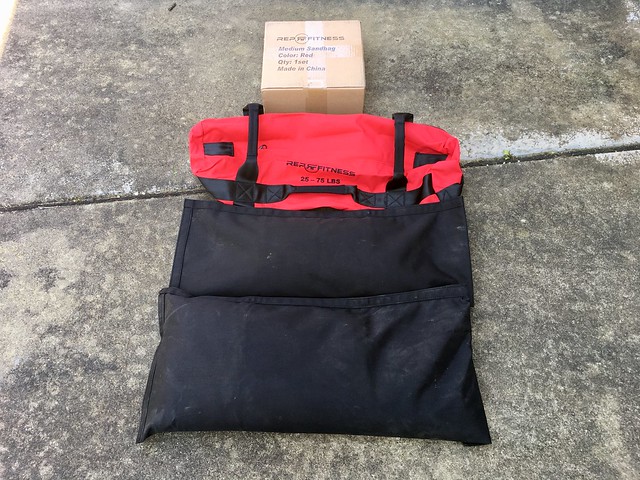 |
| Rep Fitness Sandbag with 15lb and 35lbs in filler bags |
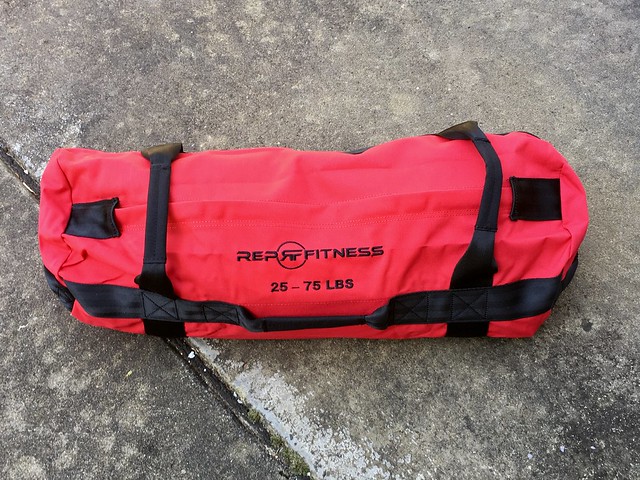 |
| Assembled 50 lb Rep Fitness sandbag |
I can see adding another sand kettlebell to round out my medicine ball and kettlebell weights, and I have room to add more weight to my sandbags. My son has started using freeweights too. I have him doing bodyweight exercises with the medicine ball (and I join in using the kettlebell) so this adds resistance. There are a few exercises designed for the kettlebell that medicine balls also work with so this will add to strength while maintaining stability and balanced development of many muscle groups at a time. To add to the bodyweight exercises, I recently purchased an agility ladder, which both of the kids enjoy immensely.
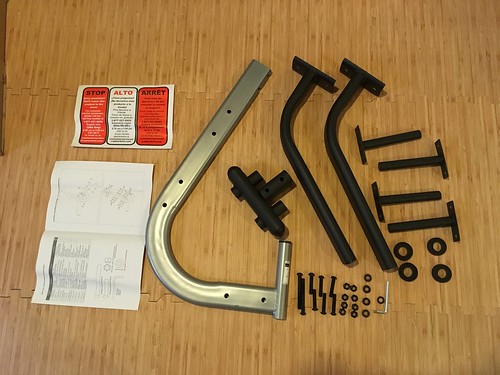
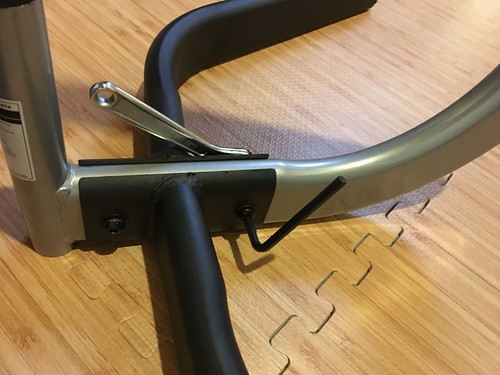
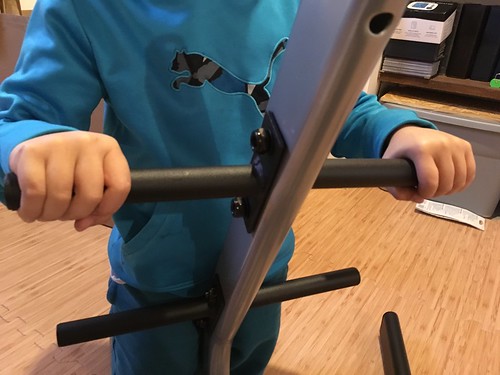

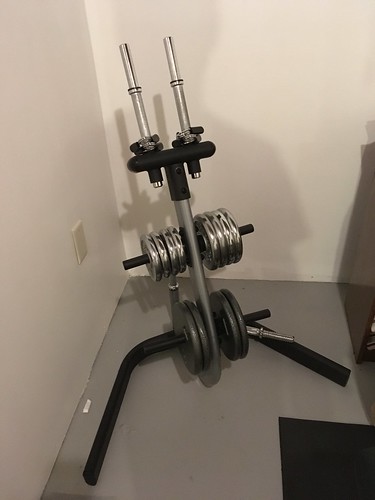
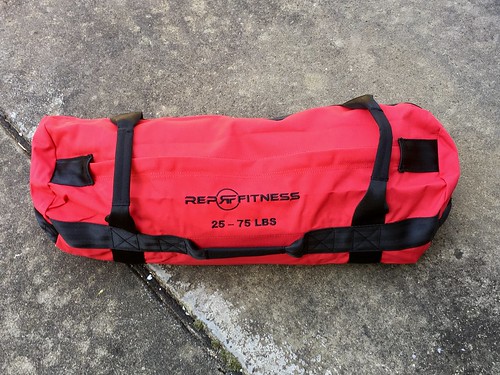
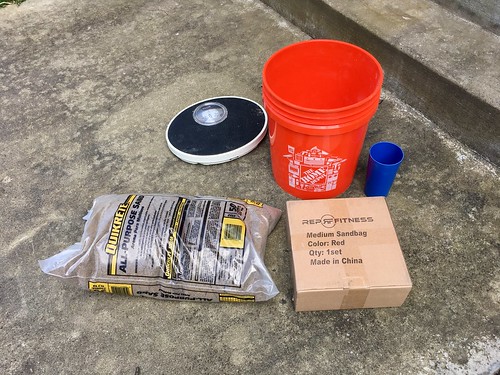
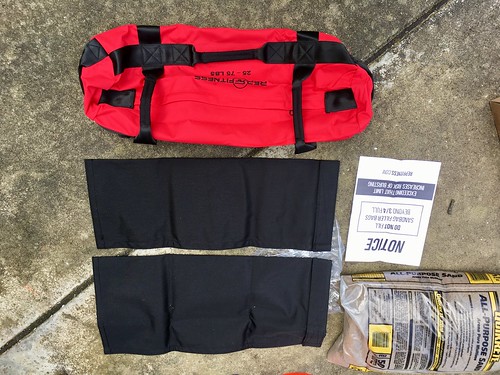
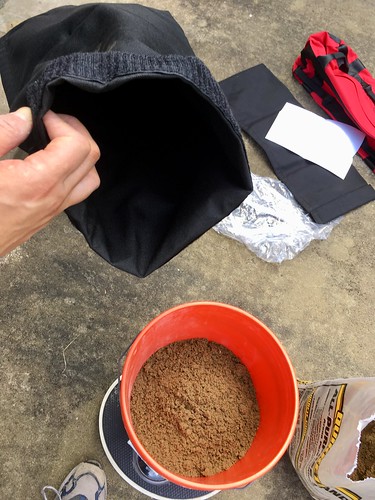
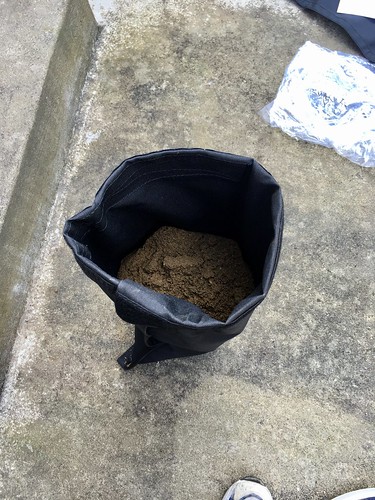

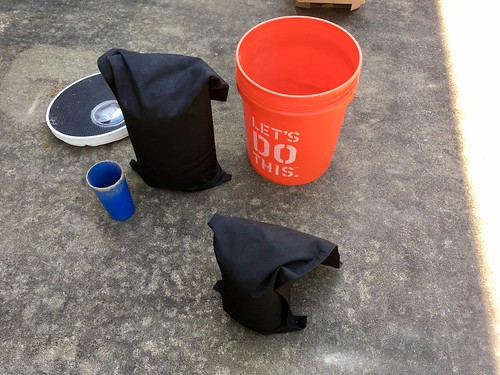
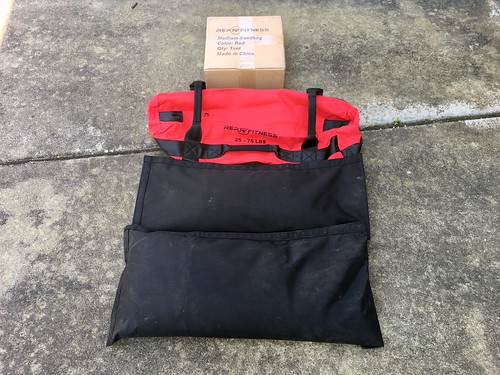
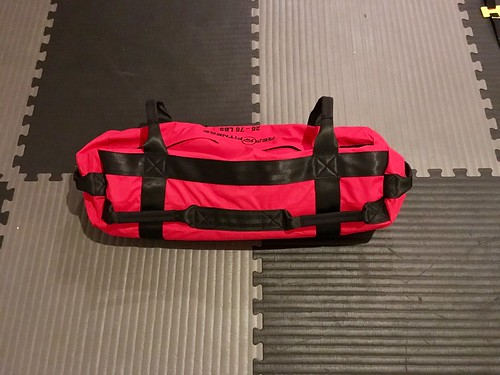

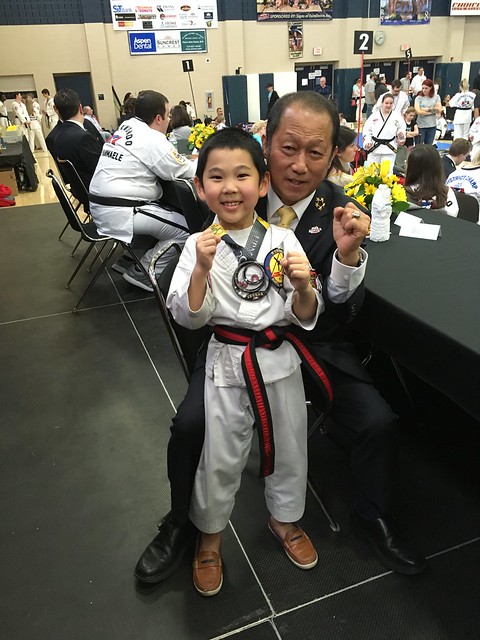
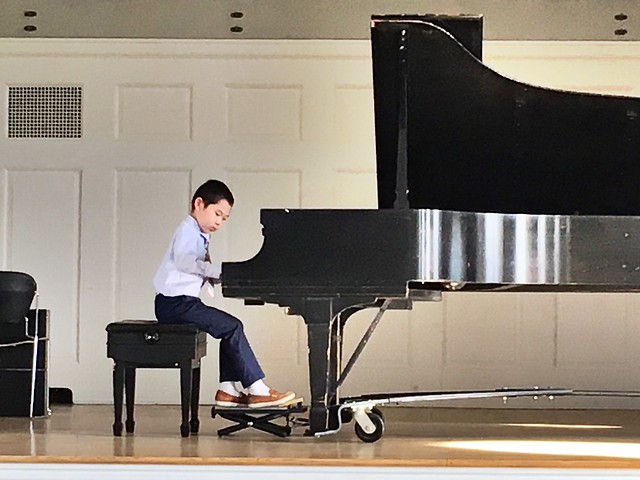 they
they 